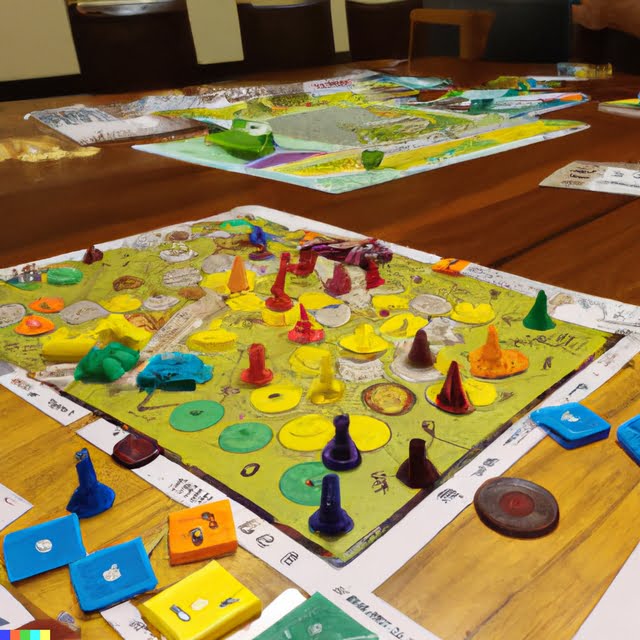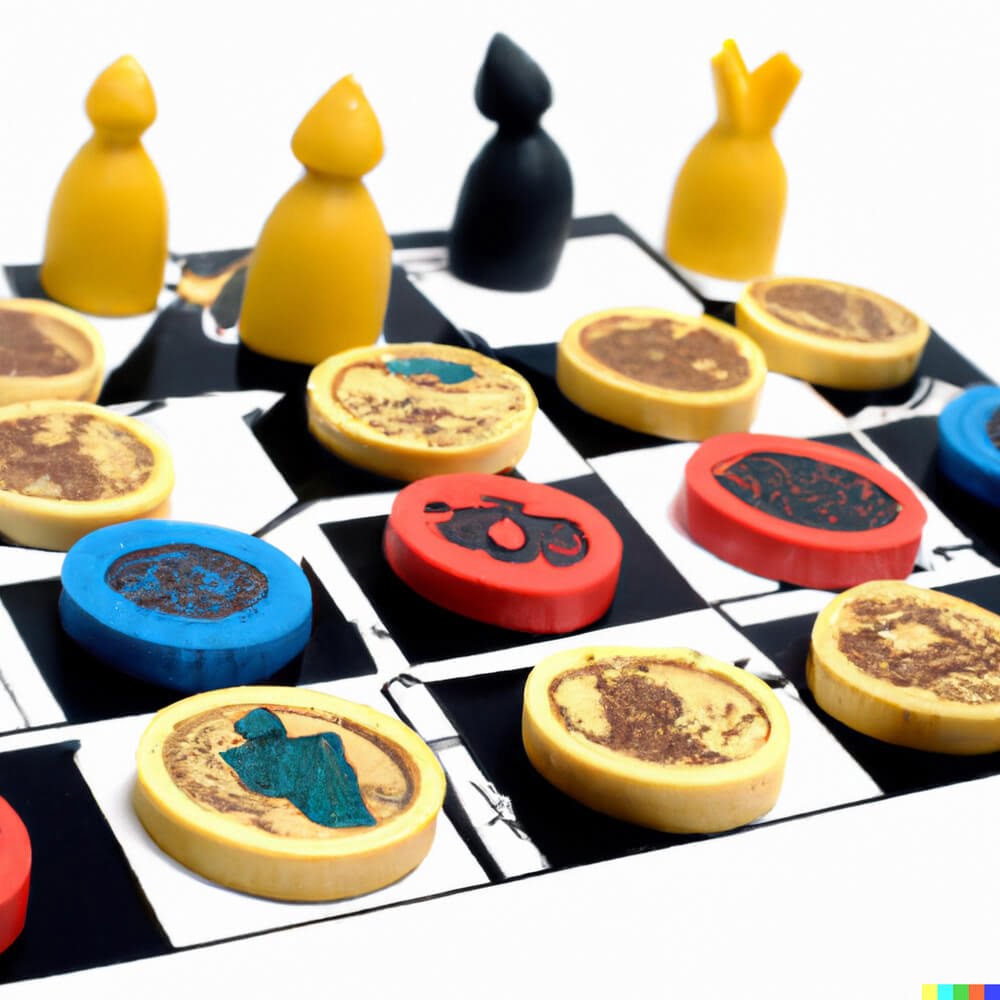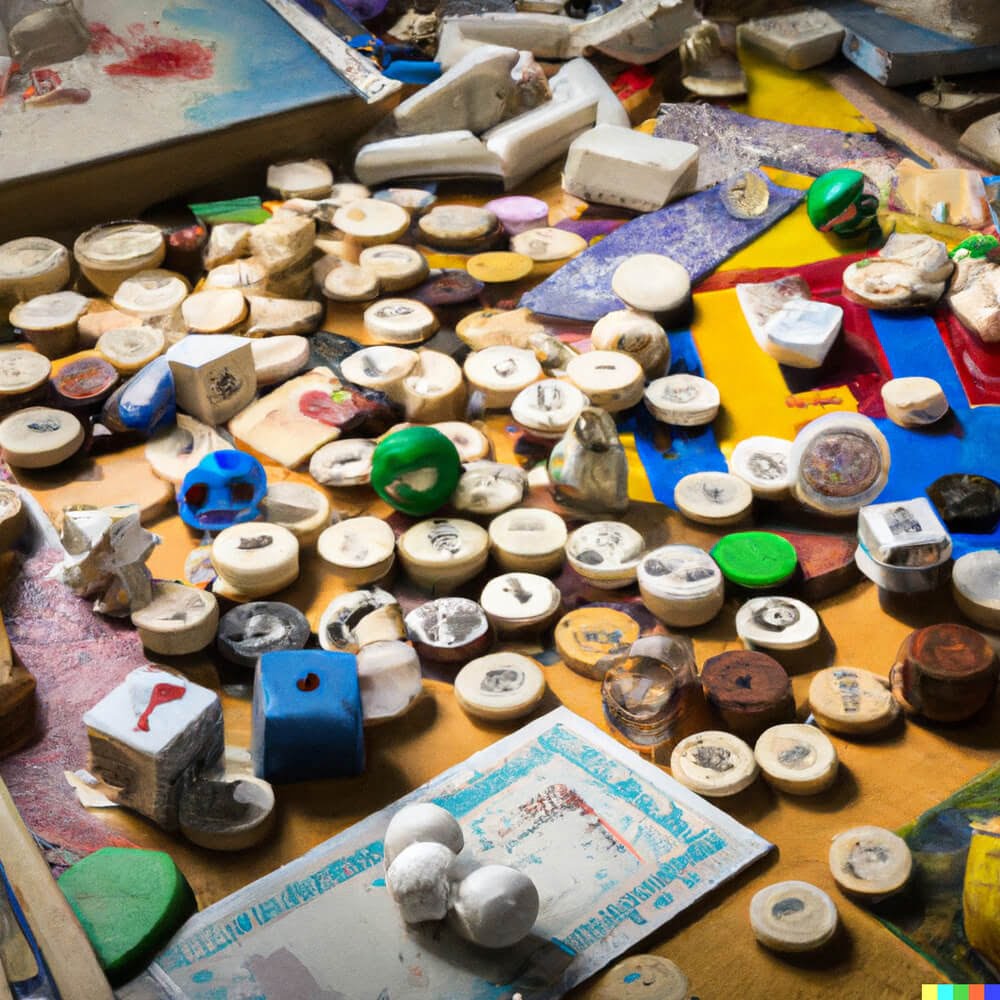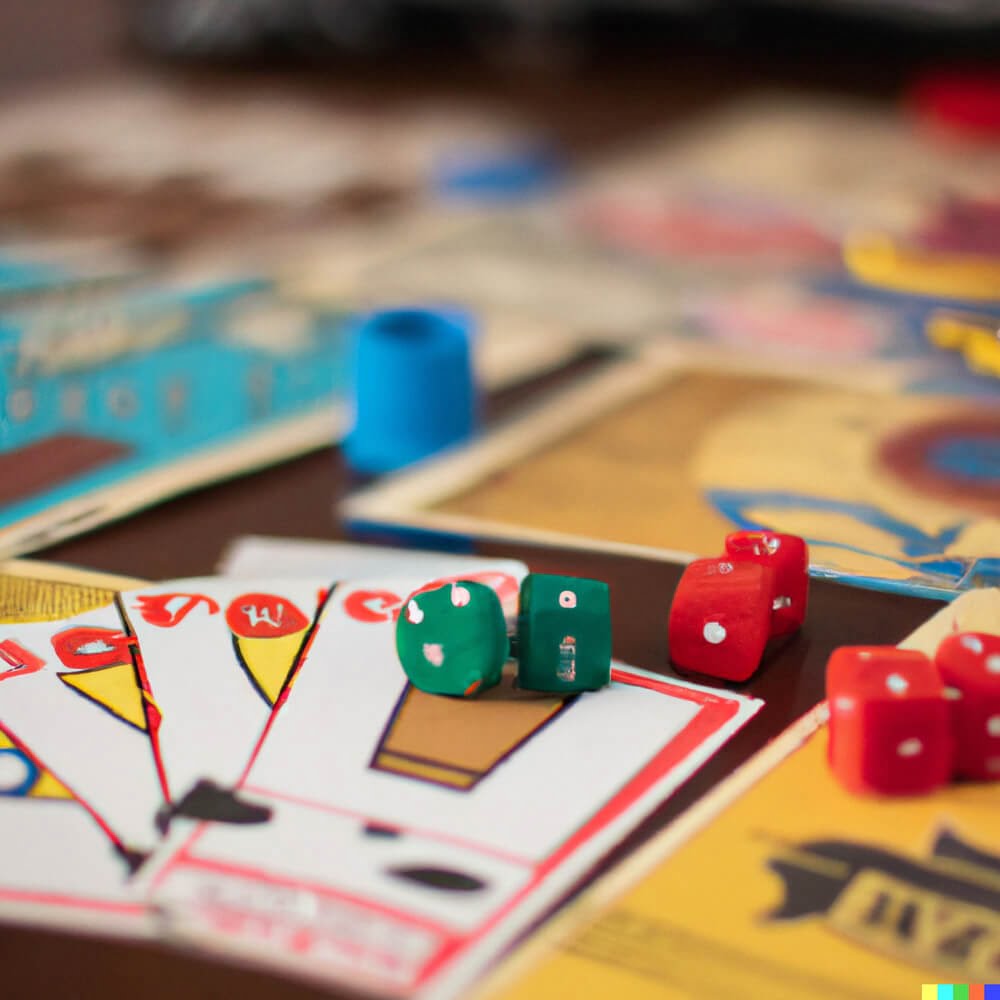Introduction
Making your own DIY board game from the comfort of your own home is an exciting and creative way to pass the time, bring family and friends together for some quality fun, and even get creative with a new way to teach educational lessons. DIY board games allow you to customize the experience, making it perfect for any age group or type of person ” from children learning basic concepts to more advanced strategy gamers. The materials used to construct a board game range from simple items like paper, craft supplies and dice, all the way up to specialized pieces such as card decks, figurines and 3D printed models.
In addition to being incredibly fun, making your own board game provides both yourself and those who play it with educational value ” teaching skills like problem-solving, turn-taking and even basic counting. When you put the effort into creating something of your own there will be a sense of pride that comes with watching others enjoy what you created. It’s also a great way to connect with your loved ones if they live far away; make a game that can be sent as a gift or played over long distances via video chat!
Materials Needed
Making a DIY board game is an exciting and rewarding experience. It’s also a great activity to do with classmates, family and friends. Before starting on your project, it’s a good idea to have a basic understanding of the materials you need to make a successful game.
To make a DIY board game, you will need:
A sturdy piece of cardboard for the game board
Piece of paper or cardstock for cards (if applicable)
Markers, crayons, or colored pencils for adding artwork
A glue stick or craft glue
Scissors
1-2 6-sided dice (recommend plastic)
Game pieces such as monopoly tokens, poker chips, checkers pieces, etc. OR you can DIY them out of clay or other materials if desired!
Depending on your specific design/game play needs, you may want to add some additional supplies like stickers, glitter glue or gemstones. You can find all of these items at most craft stores or online retailers like Amazon or Etsy.
Once you have all the needed supplies in hand, creating your DIY board game should be easy and fun! Good luck with your project!
Preparing the Board
The first step in making a DIY Board Game is to prepare the board. For this, you will need a few basic materials such as poster board, scissors, and glue. Start by cutting out your game board pieces from the poster board using scissors. Make sure to cut out enough pieces to fit your desired theme for the game and if possible consider adding any custom graphics onto your board pieces for added design.
Once all of your game board pieces are cut out, arrange them in such a way that creates a complete playing space on the floor or table – depending on where you plan to play the game. When you have arranged your pieces, glue them together securely and let it dry completely before moving onto the next step of decoration.
There are many different ways to customize and decorate your DIY Board Game – so don’t be afraid to get creative! Consider adding extra artwork or themes on either side of the boards, in places where they won’t impede playability; think bright colors and fun designs ” this will add an extra layer of fun! You could also use additional materials such as stamps or paper cutouts (if you prefer variations over paint) or maybe even some glitter or feathers if you’re looking for something really unique! Finally – don’t forget about adding labels with simple text directions which makes for easier gameplay for beginners.
Making a DIY Board Game may seem like an involved process at times but having creative control over how it looks is part of task’s appeal. Have fun with it – after all, no two boards should ever look alike!
Choosing Your Theme
When making a DIY board game, choosing an engaging and fun theme is essential. Both children and adults prefer to play games that stimulate their imaginations and provide entertainment. Whether you are making a traditional board game or something entirely new, the appeal of your theme can make or break the success of the game. Here are some tips for selecting a great board game theme:
1. Choose something that resonates with your players. This could be related to pop culture, movies, books, or even something as simple as nature or fantasy. Selecting something familiar can help make the game more accessible and allow players to relate better with the subject matter.
2. Keep it simple and easy to understand but still engaging. If your theme includes lots of complex rules and details, it may be too complicated for those playing the game. Make sure any concepts used in your theme are clear and concise so people don’t become frustrated trying to learn how to play it.
3. Utilize different eras as inspiration for your game’s setting. This gives you more flexibility when designing elements such as characters and locations within that time period.
4. Think about what type of activities players would enjoy doing during gameplay. Do they like solving puzzles? Fighting monsters? Solving mysteries? Figuring out who should wear what item during certain scenarios? These types of activities can make your board game both entertaining and creative!
Crafting the Pieces
Making pieces for your DIY board game can be a creative and fun experience. There are several different methods you can use to make the various components of your board game. One of the most popular techniques is to use materials you have on hand, such as cardboard, paper, fabric, buttons and other material items found around the home. You can create game tokens out of these materials using a craft knife, scissors and glue. Alternatively, you could use rubber stamps to create game tokens by cutting out their shapes from lightweight cardstock and then coloring them with paint or markers. For example, if you are playing a game where you need figurines to move through a castle, you could simply draw mini figures on paper or leather scraps and attach them to pieces of cardboard squares with button fasteners or glue.
For those who would rather purchase premade pieces for their board game there are also several options available depending on what your budget allows. Mini figurines specifically made for miniature games are widely available in both physical hobby stores as well as online retailers such as Amazon or eBay. If you’re looking for something more unique than this, spending some time browsing secondhand shops may end up yielding some interesting pieces that can be used in various scenarios in your game(s). A great way to gather specific elements for your DIY boardgame is asking family members or friends if they have any old toys from their own childhood that they’d like recycled into something new!
Finalizing the Rules
Finalizing the rules for your DIY board game is one of the most important parts of game design. Rules are the foundation for how players will interact with each other and can make or break the enjoyment of a game. To create effective, engaging rules it’s best to start by thinking through the core design elements: goals, turns, outcomes and resources. Goals provide direction to the players and fuel the competition between them; turns describe the sequence that players take their moves; outcomes establish what success looks like; and resources describe what pieces or components can be used in each turn.
From there you’ll need to define any unique roles associated with playing your board game as well as any special objects in play. You might also consider bonus rules (rules that offer advantages or bonuses) that encourage strategic decision-making and win states for different player types depending on their chosen strategies.
Examples of engaging rules could include adding an extra turn if a player rolls two sixes in a row, allowing players to discard any two cards from their hand at any time, or granting bonus points for landing exactly on a specific space on the board. Ideas to get started might include setting achievement goals (how many coins must be collected?), assigning item points (how much are certain items worth?), restricting movement around the map (‘tollbooth’ squares where you must pay to pass through) or granting shorter paths to those who choose certain options (a ‘lucky’ card).
Incorporating fun and interesting game-play mechanics into your DIY board game will help draw engagement from your players and keep them enthralled as they strive to win!
Final Steps
Adding Finishing Touches:
1. Print out Rules: Make sure to print out the rules for your game and make sure that everyone playing knows how to play! If you’re feeling creative, consider writing the rules in an interesting font or printing them out on brightly colored paper.
2. Construct Pieces: Pieces can be something as simple as pawns or tokens like coins, buttons, or poker chips. You can also get creative and construct pieces from collections of items around your home such as stones, pebbles, Lego pieces, etc.
3. Add Labels: Labels can include anything from directions for movement to special symbols or icons that will help stay on top of the gameplay. You can make labels out of removable adhesive vinyl if you want a more professional look or write them directly onto each board space.
4. Gather Supplies: Don’t forget to gather any other supplies needed while playing such as pencils and paper for keeping score if applicable, a timer in case someone lingers at a decision-making step too long, snacks (optional), etc. Stick to whatever creates an enjoyable experience for everyone involved!
Checklist to Ensure Everything is Ready:
1. All pieces printed and constructed?
2. All labels applied?
3. Game instructions printed?
4. Supplies gathered?
5. Everyone knows the instructions/rules?
Conclusion
Creating your own DIY board game is a great way to spend time with friends and family. It not only provides creative outlets for you, but encourages others to use their imagination as well. It is also a budget-friendly way to get creative and make some quality entertainment for everyone involved. Plus, DIY board games can bring people together in ways other activities cannot. They are full of challenges, surprises and opportunities to bond with each other through teamwork and competition. Making your own board game should be an enjoyable experience that lets you play with friends and family while sharpening your creativity along the way. So, don’t hesitate any longer ” grab some supplies, use your imagination and have fun making a one-of-a-kind game that only you could create!

I love playing all kinds of games – from classics like Monopoly to modern favourites like Ticket to Ride.
I created this blog as a way to share my love of board games with others, and provide information on the latest releases and news in the industry.





